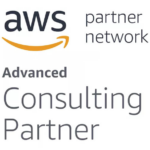During re:Invent 2023, Amazon introduced the game-changing Graviton4. Besides improving computing performance, Graviton4 reduces energy use, making a step toward environmentally friendly cloud computing. In this article, we’ll explain what Graviton4 is, discuss its challenges, and offer suggestions on how to handle them.
Environmental challenges with increasing data workloads
In 2024, sustainability is expected to take center stage, driven by global initiatives like COP28, a climate agreement signed by over 140 countries in Dubai, and EU initiatives such as the upcoming Corporate Sustainability Reporting Directive (CSRD). These events highlight a growing emphasis on environmental responsibility, urging the tech industry to unite in the fight against climate change. A significant contributor to carbon emissions comes from the vast and growing digital landscape, where the environmental impact of data storage and computing workloads is often overlooked in company’s sustainability reporting. Therefore, we were happy to see that Amazon had a great focus on sustainability and cost optimizing at re:Invent 2023. It’s time for the tech industry to address the carbon footprint of rising data storage and data workloads.
Graviton4, the Sustainable Solution
The release of the Graviton4 architecture at AWS re:Invent 2023 has brought about a new era of energy-efficient computing. It stands out as the most powerful and energy-efficient processor to date, offering significant advancements in both sustainability and price performance for workloads running on Amazon Elastic Compute Cloud (Amazon EC2).
Graviton4 addresses the growing challenges posed by increasing data workloads, providing up to 30% better compute performance, 50% more cores, and 75% more memory bandwidth compared to its previous version, Graviton3. The chip complements AWS’s commitment to sustainability, aligning with the company’s goal to reach net-zero carbon emissions by 2040.
Moreover, Graviton4 is tailored to meet the demands of various workloads, including machine learning (ML) training and generative artificial intelligence (AI) applications. Its versatility, combined with enhanced security features like full encryption of high-speed interfaces, makes it a comprehensive solution for a broad range of applications.
In conclusion, the Graviton4 architecture is a significant step towards sustainable cloud computing. By adopting multi-architecture for your cloud projects, you can further optimize your costs and reduce your carbon footprint.
Graviton covers most use cases for workloads such as:
- General Purpose
- Compute Optimized
- Memory Optimized
- Storage Optimized
- Accelerated Computing
Challenges with Graviton
To allow maximum flexibility when it comes to your workloads, we suggest aiming for a multi-architecture solution which gives the developers the option to choose Graviton where applicable. If the workload includes a database like RDS or in-memory cashing like ElastiCache then there are good Graviton alternatives as well.
If your application is written in a script language like Python, TypeScript/NodeJS or a multi-platform language like Java (Kotlin, Scala, and Groovy), the chance is that with minimal effort the application will run out of the box. The most, commonly used, compiled languages like C/C++, Go or Rust fully support the Graviton/Arm64 platform. In this situation a recompile for this architecture is necessary.
Most popular Linux distributions have support for Graviton, so that should not be a problem.
When it comes to libraries and their versions, you need to be a bit careful since older versions do not support Graviton/ARM. To analyze if your application can run on Graviton, use a tool called Porting Advisor for Graviton.
Moving your workload to Gaviton
A great start is to dig down into the Graviton Getting Started technical guidance. It goes into depth in many aspects of moving your workload to Graviton.
When transitioning your service or application you must check these steps:
- Code dependencies
- Identify versions of libraries to find if they are compatible and optimized.
- Operating system
- Does it support Graviton and offer full performance? Upgrades may be needed.
- Language runtimes
- Are they stable and performant? Do they need another setting for garbage collection? If possible, upgrade to a higher version to gain compatibility.
- Codebase
- Go through Infrastructure-as-Code templates to see if any changes are needed. Also, in this case version upgrades and identify dependencies may be needed.
- Adopt the CI/CD pipeline to be able to build images for Lambda, EC2, ECS/Fargate/Batch or EKS and store them in in a repository that support multi-architecture, like ECR.
- Test and benchmark
- To see that everything works and perform as expected compared to before.
Get in contact!
Do you want to know more about how you can lower your costs and improve you carbon footprint with the most powerful and energy-efficient chip for various workloads?
We understand the importance of sustainability and cost optimization and can help you achieve both by adopting multi-architecture whit AMI Images and Docker Images for Amazon Elastic Container Service (ECS) and Amazon Elastic Kubernetes Services (EKS). By doing so, you can optimize your cloud projects for both performance and cost while reducing your carbon footprint.
Get in touch if you want to know more. We would love to work together to build a more sustainable future!






